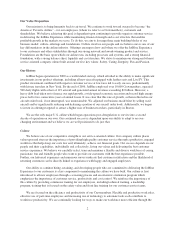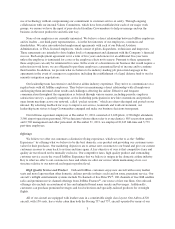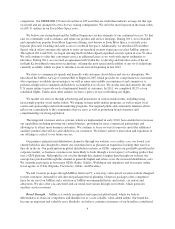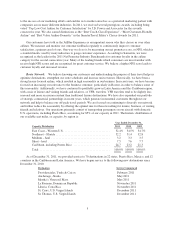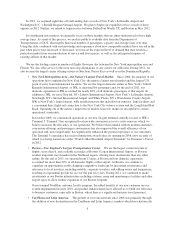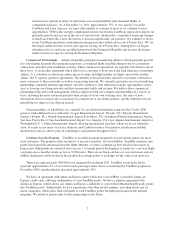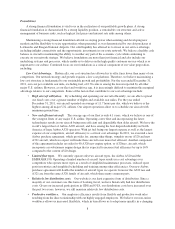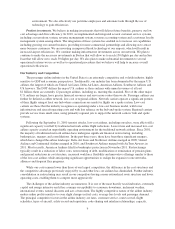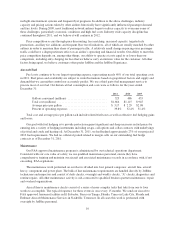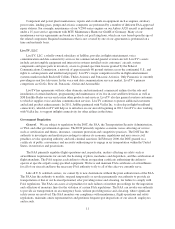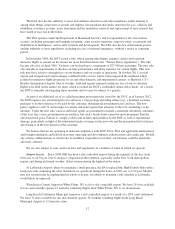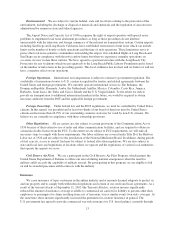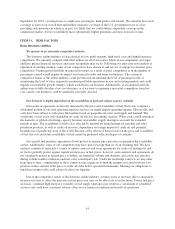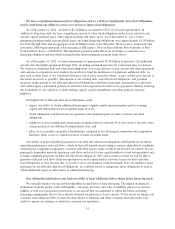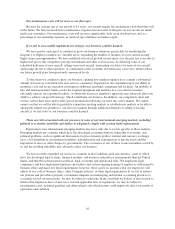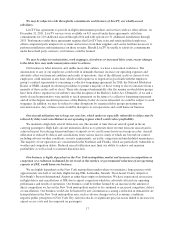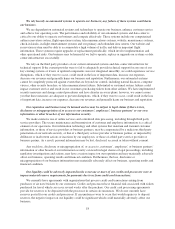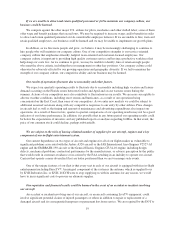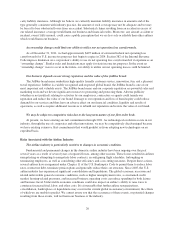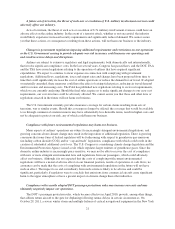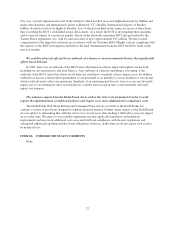JetBlue Airlines 2011 Annual Report Download - page 22
Download and view the complete annual report
Please find page 22 of the 2011 JetBlue Airlines annual report below. You can navigate through the pages in the report by either clicking on the pages listed below, or by using the keyword search tool below to find specific information within the annual report.The FAA also has the authority to issue airworthiness directives and other mandatory orders relating to,
among other things, inspection of aircraft and engines, fire retardant and smoke detection devices, collision and
windshear avoidance systems, noise abatement and the mandatory removal and replacement of aircraft parts that
have failed or may fail in the future.
The TSA operates under the Department of Homeland Security and is responsible for all civil aviation
security, including passenger and baggage screening, cargo security measures, airport security, assessment and
distribution of intelligence, and security research and development. The TSA also has law enforcement powers
and the authority to issue regulations, including in cases of national emergency, without a notice or comment
period.
In December 2009, the DOT issued a rule, which among other things, requires carriers not to permit
domestic flights to remain on the tarmac for more than three hours (the “Tarmac Delay regulations”). The rule
became effective in April 2010. Violators can be fined up to a maximum of $27,500 per passenger. The new rule
also introduces requirements to disclose on-time performance and delay statistics for certain flights. This new
rule may have adverse consequences on our business and our results of operations. In October 2011, several
airport and navigational system outages combined with a severe winter storm impacted the northeast which
resulted in numerous flight diversions, by us and other domestic and international carriers, to Hartford, CT’s
Bradley International Airport. Due to weather, field and airport terminal conditions, five of our six diverted
flights were held on the tarmac for times which exceeded the DOT’s established tarmac delay limits. As a result,
the DOT is formally investigating these incidents and we may be subject to a penalty.
As part of an additional set of so-called passenger protection rules issued by the DOT, as of January 2012,
the DOT requires any advertised price for airfare or a tour package including airfare (e.g., a hotel/air vacation
package) to be the total price to be paid by the customer, including all government taxes and fees. The new
policy applies to all U.S. and foreign air carriers and ticket agents that advertise in the U.S. (including via the
internet). Under the new rule, carriers and ticket agents are permitted to include a statement informing customers
of the base fare versus government taxes and fees, but such a break-down cannot be more prominent than the
advertised total price. Failure to comply could result in fines and penalties by the DOT as well as reputational
damage, particularly in light of the substantial media coverage on the new rule and the perception that total price
advertising is in the best interest of the customer.
We believe that we are operating in material compliance with DOT, FAA, TSA and applicable international
and foreign regulations and hold all necessary operating and airworthiness authorizations and certificates. Should
any of these authorizations or certificates be modified, suspended or revoked, our business could be materially
adversely affected.
We are also subject to state and local laws and regulations in a number of states in which we operate.
Airport Access. Since 2008, JFK has been a slot-controlled airport during the majority of the day, from
6:00 a.m. to 10:59 p.m. Due to airspace congestion in the northeast, especially in the New York metropolitan
region, and during inclement weather, delays remain among the highest in the nation.
At LaGuardia Airport, where we maintain a small presence, the FAA replaced the High Density Rule with a
temporary rule continuing the strict limitations on operations during the hours of 6:00 a.m. to 9:59 p.m. Should
new slot auction rules be implemented in whole or in part, our ability to maintain a full schedule at LaGuardia
would likely be impacted.
Westchester County Airport in White Plains, NY is also a slot-controlled airport. We have 26 slots available
for use and currently operate 13 weekday round trip flights from White Plains, NY to six destinations.
Long Beach (California) Municipal Airport is a slot-controlled airport as a result of a 1995 court settlement.
We have 32 slots available for use and currently operate 30 weekday roundtrip flights from Long Beach
Municipal Airport to 12 domestic cities.
12


